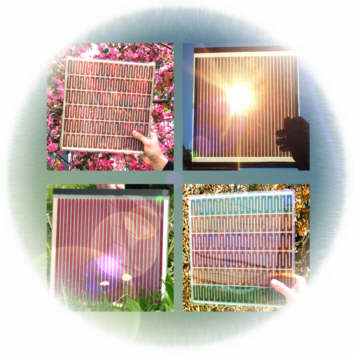May
24
New Life for a Good Old Solar Cell Idea
May 24, 2012 | Leave a Comment
New Life for a Good Old Solar Cell Idea
The Grätzel solar cell uses a molecular dye sensitized to absorb sunlight and convert it to electricity. It’s a good concept that simply won’t last, they typically won’t last more than 18 months, making them commercially unviable. Researchers have been looking for alternatives for two decades.
Grätzel technology is a promising low-cost and environmentally friendly solar cell with a significant disadvantage; it leaks the electrolyte, that’s made of an organic liquid corroding the solar cell.
Northwestern University researchers have developed a new solar cell that, in principle, will minimize all of these solar energy technology limitations. Nanotechnology expert Robert P. H. Chang collaborated with chemist Mercouri Kanatzidis with the challenge of the Grätzel cell. Kanatzidis’ solution was a new material for the electrolyte that starts during construction as a liquid but becomes a solid mass.
The new Grätzel cell is an all solid-state solar cell and is inherently stable.
Kanatzidis offers his metaphor to make a conclusion, “The Grätzel cell is like having the concept for the light bulb but not having the tungsten wire or carbon material. We created a robust novel material that makes the Grätzel cell concept work better. Our material is solid, not liquid, so it should not leak or corrode.”
Postdoctoral fellow In Chung in the Kanatzidis group worked closely with graduate student Byunghong Lee in the Chang group to develop the new cells, achieving performance gains that amounted to approximately 1 percent per month. Northwestern’s cell is a thin-film compound made up of cesium, tin and iodine, called CsSnI3, replacing the entire liquid electrolyte of the Grätzel cell.
Another difference is the new solar cell uses both n-type and p-type semiconductors and a monolayer dye molecule serving as the junction between the two. Each nearly spherical nanoparticle, made of titanium dioxide, is an n-type semiconductor. Kanatzidis’ CsSnI3 thin-film material is a new kind of soluble p-type semiconductor.
A single solar cell measures half a centimeter by half a centimeter and about 10 microns thick. The dye-coated nanoparticles are packed in, and Kanatzidis’ new material, which starts as a liquid, is poured in, flowing around the nanoparticles. Much like paint, the solvent evaporates, and a solid mass results. The sunlight-absorbing dye, where photons are converted into electricity, lies right between the two semiconductors.
Chang chose to use nanoparticles approximately 20 nanometers in diameter. This size optimizes the device, he explained, increasing the surface area and allowing enough space between the particles for Kanatzidis’ material to flow through and set.
The new cell exhibits the highest conversion efficiency (approximately 10.2 percent) so far reported for a solid-state solar cell equipped with a dye sensitizer. This value is close to the highest reported performance for a Grätzel cell at approximately 11 to 12 percent. That compares to conventional solar cells made from highly purified silicon that can convert roughly 20 percent of incoming sunlight.
Chang takes up the discussion, “Our inexpensive solar cell uses nanotechnology to the hilt. We have millions and millions of nanoparticles, which gives us a huge effective surface area, and we coat all the particles with light-absorbing dye.”
As a practical matter the technology of the new cell is not really a Grätzel cell anymore, even though the Grätzel cell was the inspiration, because the hole-conducting material CsSnI3 is itself light absorbing. In fact, the material absorbs more light over a wider range of the visible spectrum than the typical dye used in Grätzel cells. In the Kanatzidis-Chang cell, the CsSnI3 plays an additional role in the operation of the cell that is not played by the liquid electrolyte couple, and that role is light absorption.
Chang lights up with, “This is the first demonstration of an all solid-state dye-sensitized solar cell system that promises to exceed the performance of the Grätzel cell. Our work opens up the possibility of these materials becoming state of the art with much higher efficiencies than we’ve seen so far. This is only the beginning. Our concept is applicable to many types of solar cells. There is a lot of room to grow.”
The team notes the lightweight thin-film structures are compatible with automated manufacturing. Next they plan to build a large array of the solar cells.
The paper is titled “All-Solid-State Dye-Sensitized Solar Cells With High Efficiency” published yesterday in the journal Nature. In addition to Kanatzidis, Chang, Chung and Lee, the other author of the paper is Jiaqing He, from Northwestern.
Easy to build, low cost and fairly efficient already – This is good work.


